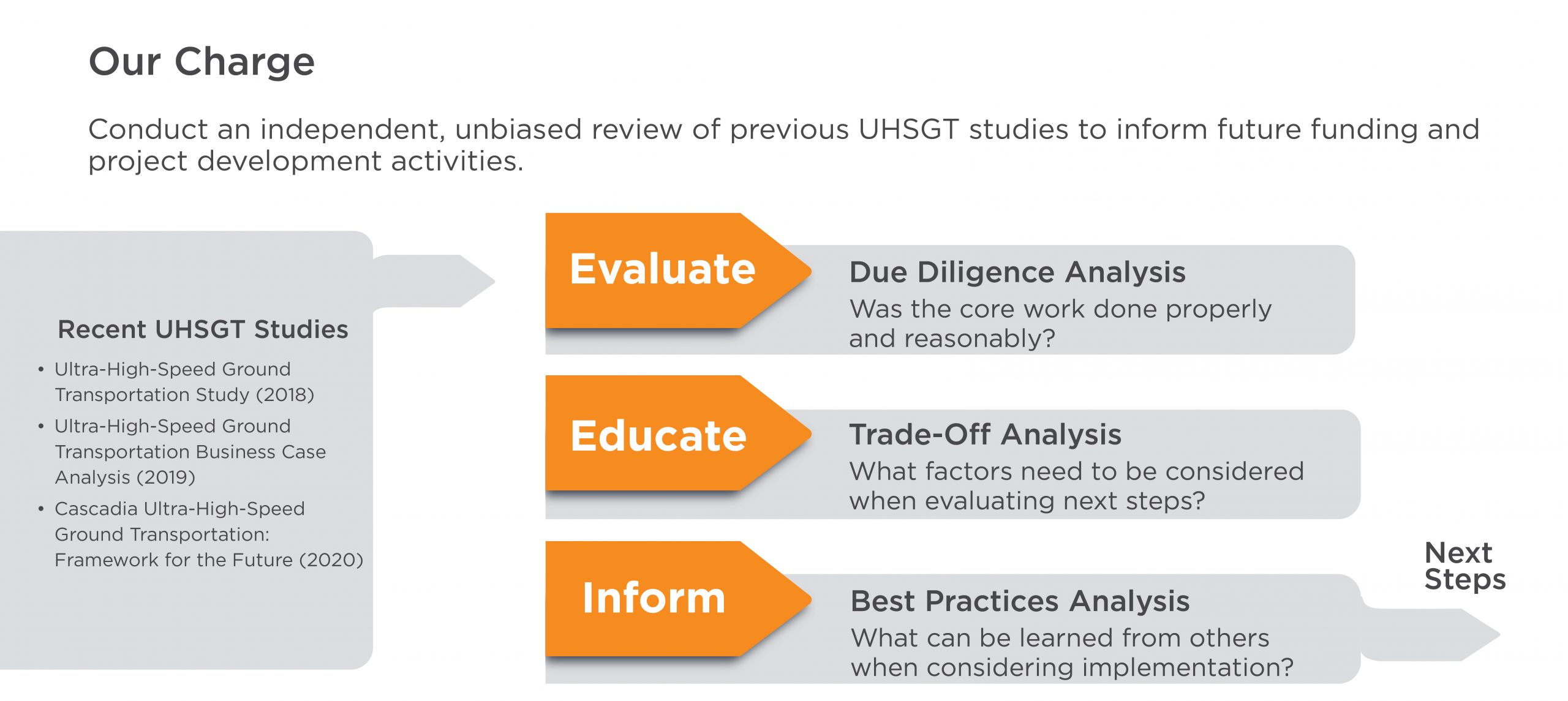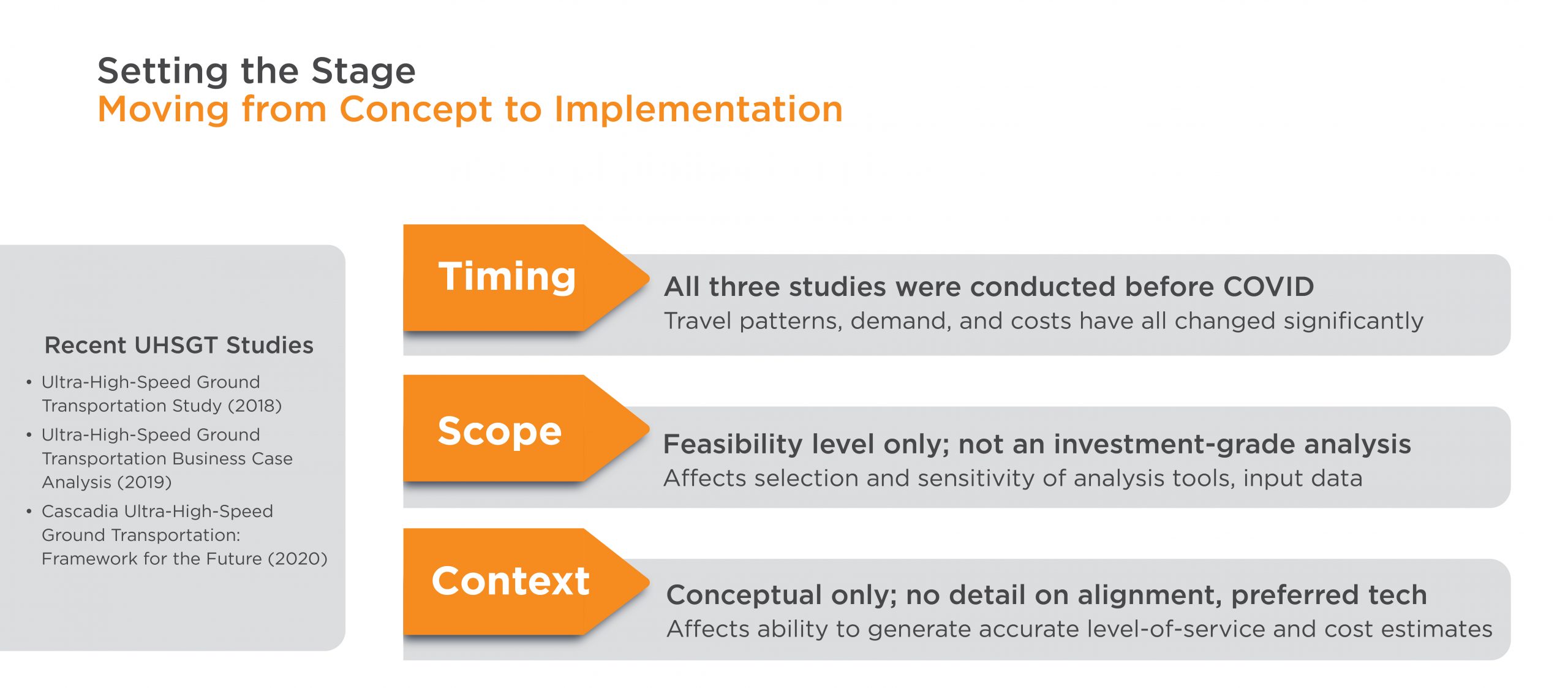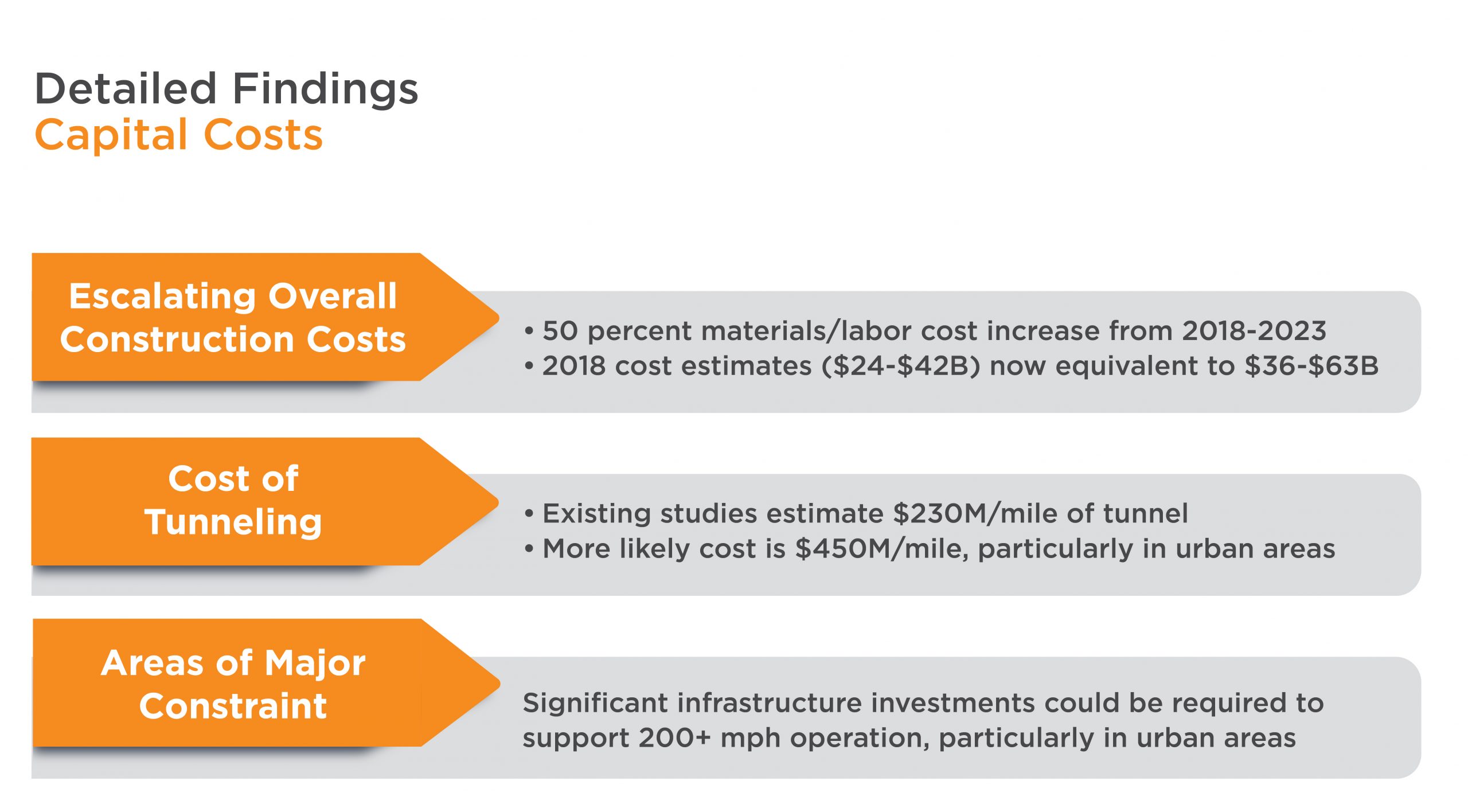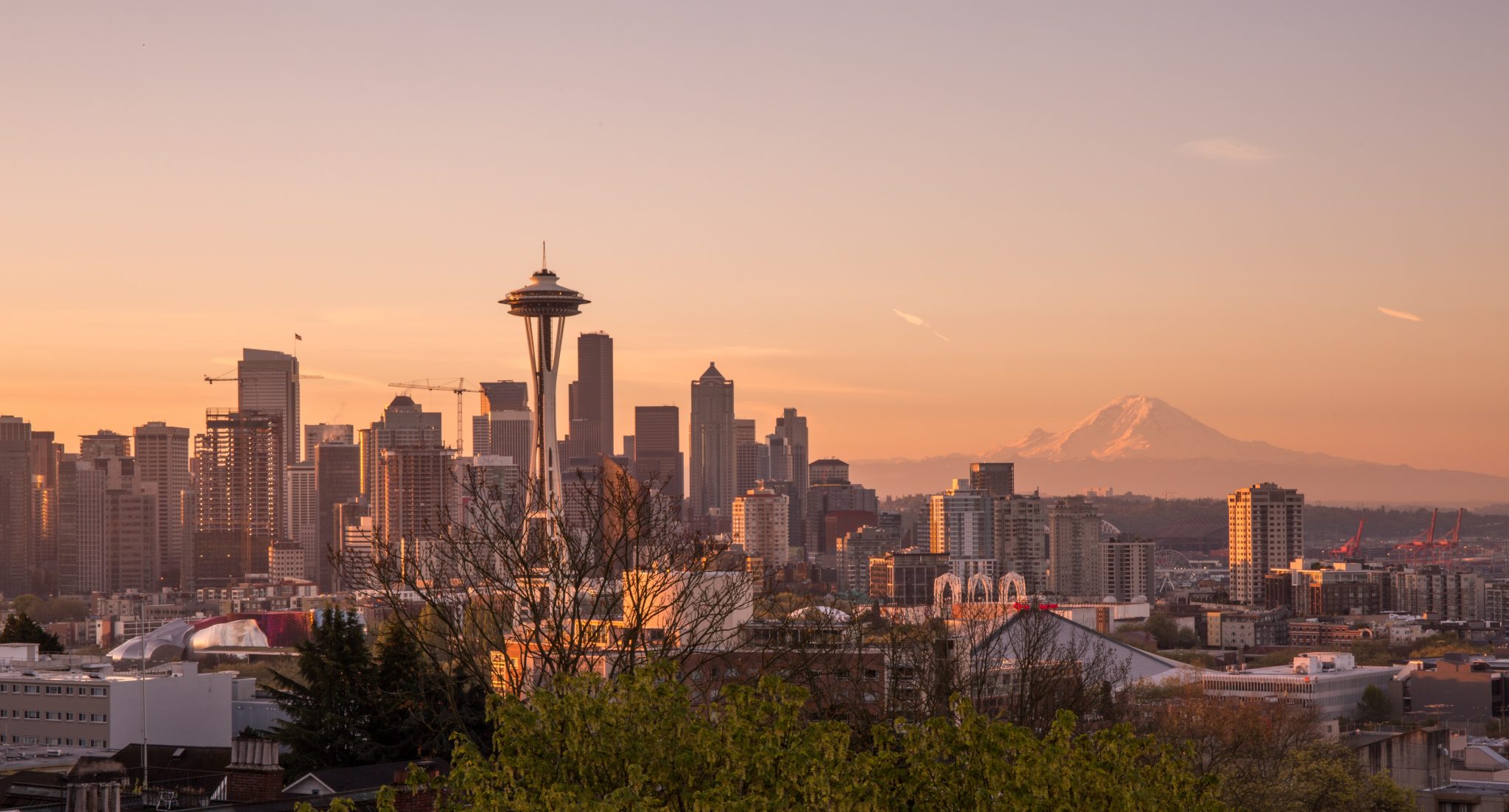In 2016, Governor Jay Inslee directed the Washington State Department of Transportation (WSDOT) to consider an ultra-high-speed ground transportation system (UHSGT) to connect the Cascadia region’s primary metro areas, including Vancouver, Seattle, and Portland. He hoped to stimulate the region’s economy and improve accessibility by connecting these significant employment and commerce hubs.
The Challenge
Between 2018 and 2020, WSDOT completed three studies to understand the feasibility, potential challenges, benefits, and impacts of the Cascadia UHSGT. An ultra-high-speed ground transportation system like the one described here is a significant undertaking, requiring a high degree of intergovernmental cooperation and planning. Similar successful projects have required a decade or more of planning before reaching the procurement phase, and even longer to reach delivery. Before advancing the project, the Washington State Legislature’s Joint Transportation Committee (JTC) made the prudent decision to commission an independent review of the project’s assumptions to inform future funding decisions.
The JTC selected RSG, working with STV, to conduct an independent, unbiased review of previous studies by assessing their adequacy, identifying additional considerations for future UHSGT development, and extracting relevant lessons from other high-speed transportation systems to guide the project’s next steps. The goal of this review was to help advance the Cascadia UHSGT project from concept to reality by providing a strong foundation for additional detailed analysis and forecasting.
RSG's Solution
RSG used our extensive ridership forecasting, data, and modeling expertise to thoroughly review the previous project work and evaluate the forecasts. Our team divided our independent review and results into three phases:
- Due Diligence Analysis: Our team evaluated the core work of previous studies, including the credibility of data sources, input assumptions, and outputs. While most elements proved consistent with industry standards, we flagged areas like survey methods, travel time, and cost assumptions for improvement.
- Trade-Off Analysis: We analyzed various market, cost, economic, environmental, and implementation factors across three scenarios: incremental, state-of-the-art, or hybrid approach. While previous studies remained “technology agnostic,” our analysis revealed that state-of-the-art and hybrid rail systems could yield better ridership and economic benefits, albeit with varying costs.
- Governance & Procurement Analysis: Our team confirmed that the proposed governance from the original 2020 Framework Study was sound. We identified and assessed the range of governance, procurement, and delivery methods and best practices that could help bring the Cascadia UHSGT to life. Our team also observed that the Gordie Howe International Bridge, between the United States and Canada, offered valuable lessons on cross-border planning, budgeting, and oversight.
RSG and STV’s analysis demonstrated the importance of understanding trade-offs between cost, speed, ridership, and level of service. It clarified how survey processes and underlying forecasting assumptions can significantly impact results, emphasizing the importance of rigorous checks and balances, particularly for investment-grade studies. This is crucial information to inform a major investment decision. RSG and STV’s review also spotlighted the complexities and timelines involved in procuring and governing a binational, cross-border system. It underscored the reality that while the methods and tools used in prior studies complied with industry standards, they lacked the robustness needed for investment-grade analyses for advanced project development.



Download a PDF
Can we stay connected?
Sign up for RSG emails to keep up with our news & insights.

